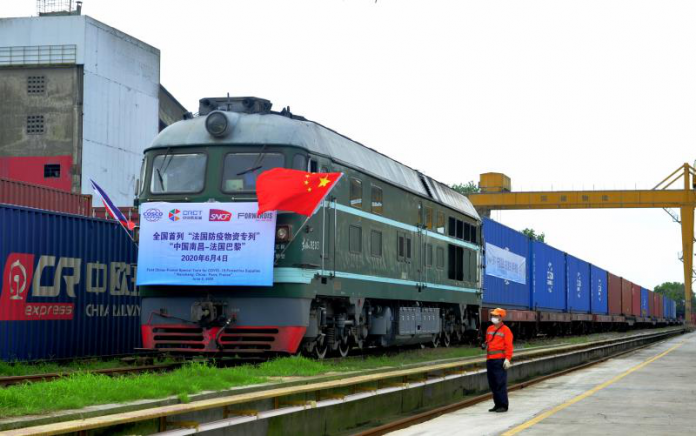China-Europe freight trains saw their busiest month to date, with 976 trains launched in April, a 47% year-on-year increase, increasing in popularity as the pandemic has stilted air cargo and reduced sea-freight options.
Since the first such train was launched on 19 March 2011, Chengdu, Zhengzhou, Wuhan, Suzhou and Guangzhou have been added to the runs, fuelling international trade.
Freight trains gained renewed momentum when China’s President Xi Jinping launched the Belt and Road initiative in 2013, with rail transport encouraged as an alternative to shipping.
As the Covid-19 pandemic has brought aviation to a standstill, shippers are seeing freight trains as a faster alternative to shipping. Particularly, as liner operators have blanked sailings to reduce capacity and maintain utilisation levels, shippers are presented both with cost and time constraints.
COSCO Shipping Lines recently arranged what local media described as the first Sino-French rail shipment of epidemic prevention materials, for French cleaning products distributor BIFP.
Carrying 20 million masks, 45 million pairs of gloves, 1.3 million water-soluble bags, and non-contact disinfectant machines in 41 containers, the train departed Nanchang (Xiangtang) International Land Port in Jiangxi on 4 June, passing through seven countries before arriving in Valenton station in Paris on 23 June.
COSCO Shipping Lines’ general manager for its French operations, Yao Hongzhi, said the train arrived in Paris punctually without the cargoes being disturbed, proving that rail is feasible and reliable.
Recognising the potential of freight trains in maintaining international trade, on 24 February, China’s General Administration of Customs reduced the number of required declarations to promote multimodal transportation.
As e-commerce retail sales took off amid international lockdowns, railed cargoes have comprised not only raw materials, but also consumer goods such as cosmetics, clothes and electronic appliances.
Source: container-news.com








































